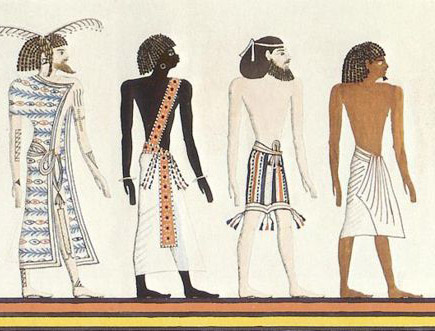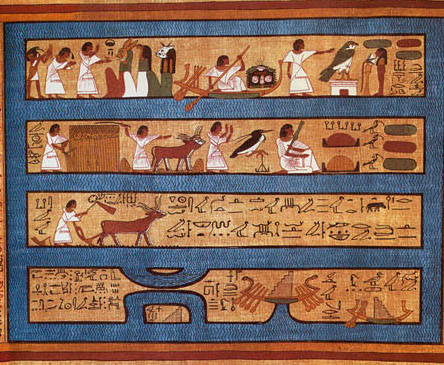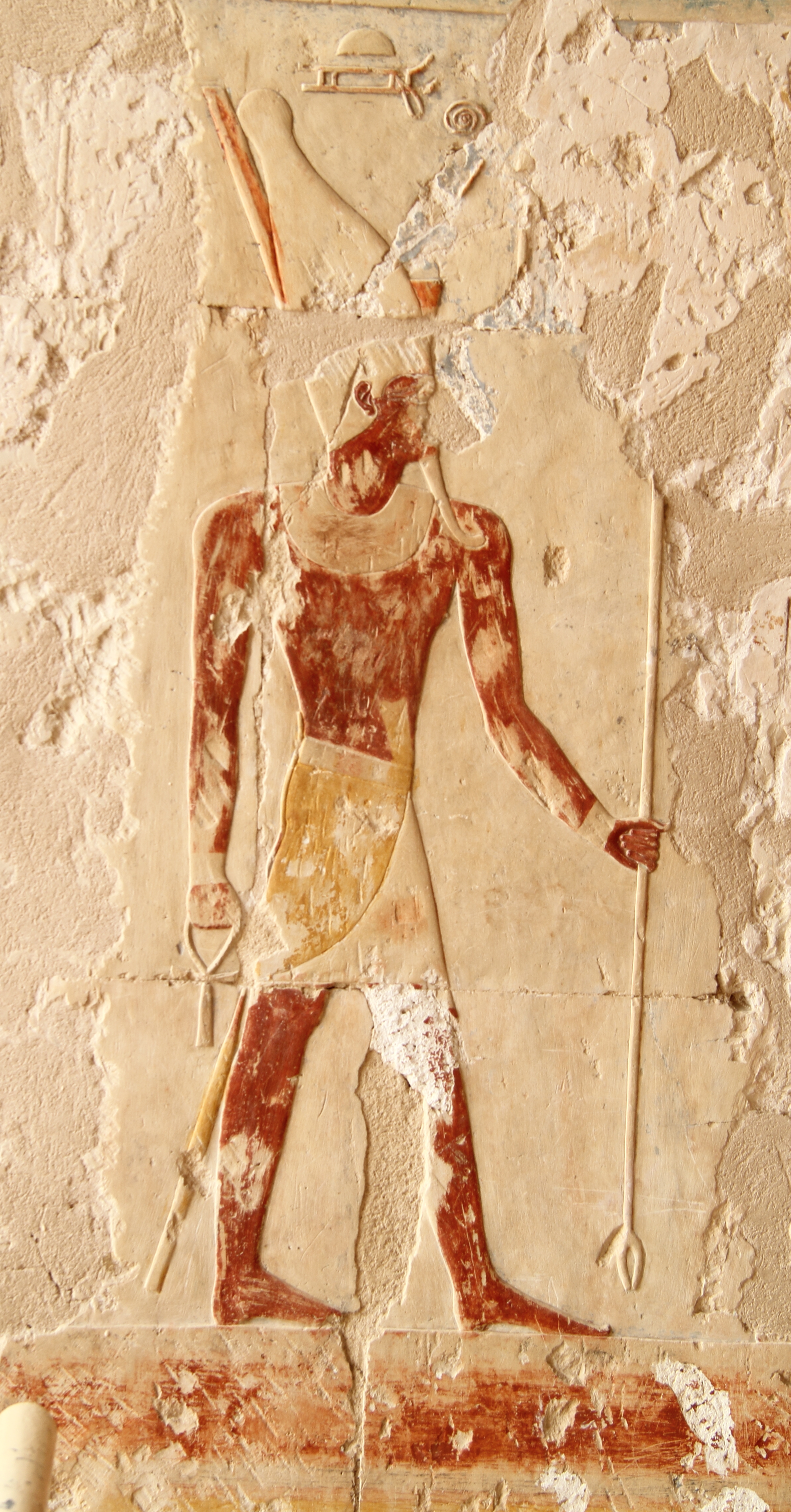|
Egyptian Underworld
The Duat ( egy, dwꜣt, Egyptological pronunciation "do-aht", cop, ⲧⲏ, also appearing as ''Tuat'', ''Tuaut'' or ''Akert'', ''Amenthes'', ''Amenti'', or ''Neter-khertet'') is the realm of the dead in ancient Egyptian mythology. It has been represented in hieroglyphs as a star-in-circle: 𓇽. The god Osiris was believed to be the lord of the underworld. He was the first mummy as depicted in the Osiris myth and he personified rebirth and life after death. The underworld was also the residence of various other gods along with Osiris. The geography of the ''Duat'' is similar in outline to the world the Egyptians knew: There are realistic features like rivers, islands, fields, lakes, mounds and caverns, but there were also fantastic lakes of fire, walls of iron, and trees of turquoise. In the ''Book of Two Ways'' (a Coffin Text) there is even a map-like image of the ''Duat''. Resident souls, gods, and demons The ''Duat'' was also a residence for various gods, including Osiri ... [...More Info...] [...Related Items...] OR: [Wikipedia] [Google] [Baidu] |
Egypt
Egypt ( ar, مصر , ), officially the Arab Republic of Egypt, is a transcontinental country spanning the northeast corner of Africa and southwest corner of Asia via a land bridge formed by the Sinai Peninsula. It is bordered by the Mediterranean Sea to the north, the Gaza Strip of Palestine and Israel to the northeast, the Red Sea to the east, Sudan to the south, and Libya to the west. The Gulf of Aqaba in the northeast separates Egypt from Jordan and Saudi Arabia. Cairo is the capital and largest city of Egypt, while Alexandria, the second-largest city, is an important industrial and tourist hub at the Mediterranean coast. At approximately 100 million inhabitants, Egypt is the 14th-most populated country in the world. Egypt has one of the longest histories of any country, tracing its heritage along the Nile Delta back to the 6th–4th millennia BCE. Considered a cradle of civilisation, Ancient Egypt saw some of the earliest developments of writing, agriculture, ur ... [...More Info...] [...Related Items...] OR: [Wikipedia] [Google] [Baidu] |
Ancient Egyptian Conception Of The Soul
The ancient Egyptians believed that a soul ( kꜣ and bꜣ; Egypt. pron. ka/ba) was made up of many parts. In addition to these components of the soul, there was the human body (called the ''ḥꜥ'', occasionally a plural '' ḥꜥw'', meaning approximately "sum of bodily parts"). According to ancient Egyptian creation myths, the god Atum created the world out of chaos, utilizing his own magic ( ḥkꜣ). Because the earth was created with magic, Egyptians believed that the world was imbued with magic and so was every living thing upon it. When humans were created, that magic took the form of the soul, an eternal force which resided in and with every human. The concept of the soul and the parts which encompass it has varied from the Old Kingdom to the New Kingdom, at times changing from one dynasty to another, from five parts to more. Most ancient Egyptian funerary texts reference numerous parts of the soul: Collectively, these spirits of a dead person were called the '' ... [...More Info...] [...Related Items...] OR: [Wikipedia] [Google] [Baidu] |
Book Of The Dead
The ''Book of the Dead'' ( egy, 𓂋𓏤𓈒𓈒𓈒𓏌𓏤𓉐𓂋𓏏𓂻𓅓𓉔𓂋𓅱𓇳𓏤, ''rw n(y)w prt m hrw(w)'') is an ancient Egyptian funerary text generally written on papyrus and used from the beginning of the New Kingdom (around 1550 BCE) to around 50 BCE. The original Egyptian name for the text, transliterated ''rw nw prt m hrw'', is translated as ''Book of Coming Forth by Day'' or ''Book of Emerging Forth into the Light''. "Book" is the closest term to describe the loose collection of texts consisting of a number of magic spells intended to assist a dead person's journey through the ''Duat'', or underworld, and into the afterlife and written by many priests over a period of about 1,000 years. Karl Richard Lepsius introduced for these texts the German name ''Todtenbuch'' (modern spelling ''Totenbuch''), translated to English as Book of the Dead. The ''Book of the Dead'', which was placed in the coffin or burial chamber of the deceased, was part of a trad ... [...More Info...] [...Related Items...] OR: [Wikipedia] [Google] [Baidu] |
Book Of Caverns
The Book of Caverns is an important ancient Egyptian netherworld book of the New Kingdom.Hornung (1999) p.83 Like all other netherworld books, it is also attested on the inside of kings’ tombs for the benefit of the deceased. It describes the journey of the sun god Ra through the six caverns of the underworld, focusing on the interaction between the sun god and the inhabitants of the netherworld, including rewards for the righteous and punishments for the enemies of the worldly order, those who fail their judgment in the afterlife. The Book of Caverns is one of the best sources of information about the Egyptian concept of hell. The Book of Caverns originated in the 13th century BC in the Ramesside Period. The earliest known version of this work is on the left hand wall of the Osireion in Abydos. Later it appears in the tomb of Ramesses IV in the Valley of the Kings. This appearance was already recorded by the founding father of Egyptology Jean François Champollion in his ... [...More Info...] [...Related Items...] OR: [Wikipedia] [Google] [Baidu] |
Book Of Gates
The Book of Gates is an ancient Egyptian funerary text dating from the New Kingdom. It narrates the passage of a newly deceased soul into the next world, corresponding to the journey of the sun through the underworld during the hours of the night. The soul is required to pass through a series of 'gates' at different stages in the journey. Each gate is associated with a different goddess, and requires that the deceased recognise the particular character of that deity. The text implies that some people will pass through unharmed, but that others will suffer torment in a lake of fire. Categories The most famous part of the ''Book of Gates'' today refers to the different races of humanity known to the Egyptians, dividing them up into four categories that are now conventionally labelled "Reth" (Egyptians), "Aamu" ( Asiatics), "Nehesu" (Nubians), and "Themehu" ( Libyans). These are depicted in procession entering the next world. The text and images associated with the Book of Gate ... [...More Info...] [...Related Items...] OR: [Wikipedia] [Google] [Baidu] |
Aaru
__NOTOC__ In ancient Egyptian mythology, Aaru (; egy, jꜣrw "Reeds, rushes"), known also as '' sḫt-jꜣrw'' or the Field of Reeds, is the heavenly paradise where Osiris rules. It has been described as the '' ka'' (a part of the soul) of the Nile Delta. The ancient Egyptians believed that the soul resides in the heart and so, upon death, the Weighing of the Heart occurred. Each human heart is weighed on a giant scale against an ostrich feather, which represents the concept of Maat. Those souls which balance the scales are allowed to start a long and perilous journey to the Field of Reeds, where they will exist in pleasure for all eternity. Hearts heavy with evil tip and fall into the crocodilian jaws of the demon Ammit. After this "second death", the soul is doomed to restlessness in Duat. The souls who qualify undergo a long journey and face many perils before reaching Aaru. Once they arrive, they enter through a series of gates. The exact number of gates varies accordi ... [...More Info...] [...Related Items...] OR: [Wikipedia] [Google] [Baidu] |
Ammit
Ammit (; egy, ꜥm-mwt, "devourer of the dead";Erman, Adolf; Grapow, Hermann (1926-1961) ''Wörterbuch der ägyptischen Sprache'', Berlin: Akademie-Verlag, volume 1, page 184.9 also rendered Ammut or Ahemait) was a goddess in ancient Egyptian religion with the forequarters of a lion, the hindquarters of a hippopotamus, and the head of a crocodile—the three largest "man-eating" animals known to ancient Egyptians. A funerary deity, her titles included "Devourer of the Dead", "Eater of Hearts", and "Great of Death". Ammit lived near the scales of justice in Duat, the Egyptian underworld. In the Hall of Two Truths, Anubis weighed the heart of a person against the feather of Ma'at, the goddess of truth, which was depicted as an ostrich feather (the feather was often pictured in Ma'at's headdress). If the heart was judged to be impure, Ammit would devour it, and the person undergoing judgment was not allowed to continue their voyage towards Osiris and immortality. Once Ammit swal ... [...More Info...] [...Related Items...] OR: [Wikipedia] [Google] [Baidu] |
El Pesado Del Corazón En El Papiro De Hunefer
EL, El or el may refer to: Religion * El (deity), a Semitic word for "God" People * EL (rapper) (born 1983), stage name of Elorm Adablah, a Ghanaian rapper and sound engineer * El DeBarge, music artist * El Franco Lee (1949–2016), American politician * Ephrat Livni (born 1972), American street artist Arts, entertainment, and media Fictional entities * El, a character from the manga series ''Shugo Chara!'' by Peach-Pit * El, short for Eleven, a fictional character in the TV series ''Stranger Things'' * El, family name of Kal-El (Superman) and his father Jor-El in ''Superman'' *E.L. Faldt, character in the road comedy film ''Road Trip'' Literature * ''Él'', 1926 autobiographical novel by Mercedes Pinto * ''Él'' (visual novel), a 2000 Japanese adult visual novel Music * Él Records, an independent record label from the UK founded by Mike Alway * ''Él'' (Lucero album), a 1982 album by Lucero * "Él", Spanish song by Rubén Blades from ''Caminando'' (album) * "Él" (Luc ... [...More Info...] [...Related Items...] OR: [Wikipedia] [Google] [Baidu] |
Amduat
The Amduat ( egy, jmj dwꜣt, literally "That Which Is In the Afterworld", also translated as "Text of the Hidden Chamber Which is in the Underworld" and "Book of What is in the Underworld"; ar, كتاب الآخرة, Kitab al-Akhira) is an important ancient Egyptian funerary text of the New Kingdom of Egypt. Like many funerary texts, it was found written on the inside of the pharaoh's tomb for reference. Unlike other funerary texts, however, it was reserved only for pharaohs (until the Twenty-first Dynasty almost exclusively) or very favored nobility.Hornung (1999), p.27 It tells the story of Ra, the Egyptian sun god who travels through the underworld, from the time when the sun sets in the west and rises again in the east. It is said that the dead Pharaoh is taking this same journey, ultimately to become one with Ra and live forever. The underworld is divided into twelve hours of the night, each representing different allies and enemies for the Pharaoh/sun god to encounter. ... [...More Info...] [...Related Items...] OR: [Wikipedia] [Google] [Baidu] |
Coffin Texts
The Coffin Texts are a collection of ancient Egyptian funerary spells written on coffins beginning in the First Intermediate Period. They are partially derived from the earlier Pyramid Texts, reserved for royal use only, but contain substantial new material related to everyday desires, indicating a new target audience of common people. Coffin texts are dated back to 2100 BCE. Ordinary Egyptians who could afford a coffin had access to these funerary spells and the pharaoh no longer had exclusive rights to an afterlife. As the modern name of this collection of some 1,185 spells implies, they were mostly inscribed on Middle Kingdom coffins. They were also sometimes written on tomb walls, stelae, canopic chests, papyri and mummy masks. Due to the limited writing surfaces of some of these objects, the spells were often abbreviated, giving rise to long and short versions, some of which were later copied in the Book of the Dead. Content In contrast to the Pyramid Texts which focus ... [...More Info...] [...Related Items...] OR: [Wikipedia] [Google] [Baidu] |
Khepri
Khepri (Egyptian: ''ḫprj,'' also transliterated Khepera, Kheper, Khepra, Chepri) is a scarab-faced god in ancient Egyptian religion who represents the rising or morning sun. By extension, he can also represent creation and the renewal of life.van Ryneveld, Maria M. ''The Presence and Significance of Khepri in Egyptian Religion and Art'', University of Pretoria (South Africa), Ann Arbor, 1992''. . Symbolism Khepri (''ḫprj'') is derived from the Egyptian language verb ''ḫpr,'' meaning to "develop", "come into being", or "create".Wilkinson, Richard H. (2003). ''The Complete Gods and Goddesses of Ancient Egypt''. Thames & Hudson. pp. 230–233 The god was connected to and often depicted as a scarab beetle (''ḫprr'' in Egyptian). Young dung beetles, having been laid as eggs within the dung ball, emerge from it fully formed and thus were considered to have been created from nothingness.Liszka, Kate. “Scarab Amulets in the Egyptian Collection of the Princeton University Art M ... [...More Info...] [...Related Items...] OR: [Wikipedia] [Google] [Baidu] |
Atum
Atum (, Egyptian: ''jtm(w)'' or ''tm(w)'', ''reconstructed'' ; Coptic ''Atoum''), sometimes rendered as Atem or Tem, is an important deity in Egyptian mythology. Name Atum's name is thought to be derived from the verb ''tm'' which means 'to complete' or 'to finish'. Thus, he has been interpreted as being the "complete one" and also the finisher of the world, which he returns to watery chaos at the end of the creative cycle. As creator, he was seen as the progenitor of the world, the deities and universe having received his vital force or ka. Origins Atum is one of the most important and frequently mentioned deities from earliest times, as evidenced by his prominence in the Pyramid Texts, where he is portrayed as both a creator and father to the king. Several writings contradict how Atum was brought into existence. Some state Atum was created by himself by saying his name, while others argue he came out from a blue lotus flower or an egg. Role In the Heliopolitan creation myt ... [...More Info...] [...Related Items...] OR: [Wikipedia] [Google] [Baidu] |



_fifth_division.jpg)




